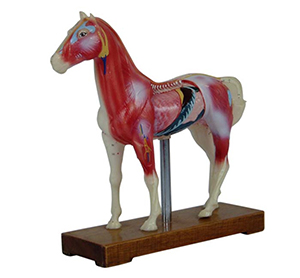21-09-2024
ADA MED SUPPLY LIMITED
Article tag: Equine acupuncture model,animal acupuncture model
Choosing the equine acupuncture model instead of the traditional teaching method is mainly based on the following advantages:
First, intuitiveness and interactivity
The equine acupuncture model displays the anatomical structure and acupuncture point distribution of horses intuitively in the form of three dimensions. This intuitiveness allows learners to clearly see the specific location of each acupuncture point on the horse, making it easier to understand and remember. In addition, the model provides an interactive learning experience where learners can perform actual acupuncture operations on the model to feel the location and depth of acupuncture points by touching and pressing, which helps to deepen memory and improve learning results.

Second, accuracy and standardization
When designing equine acupuncture model, it is usually based on the latest research results of veterinary anatomy and acupuncture science to ensure the accuracy and standardization of acupoint labeling. This enables learners to have access to standardized and accurate acupoint information in the learning process, avoiding the understanding deviation caused by text description or two-dimensional images. At the same time, the standardized design is also conducive to the international exchange and promotion of veterinary acupuncture technology.
Third, safety and no risk
In traditional teaching methods, beginners often need to practice acupuncture on real horses or human bodies, which has certain safety risks. The equine acupuncture model provides learners with a safe and risk-free practice platform. Learners can perform repeated needling operations on the model without fear of harm to the horse or human body. This security allows learners to practice with greater confidence and improve their acupuncture skills.
Fourth, convenience and economy
The equine acupuncture model has advantages of convenience and economy. It is easy to carry and store, and learners can study and practice anytime and anywhere. In addition, compared to real horses, the model is less costly and can reduce learning costs and improve the utilization of learning resources. This allows more veterinary students to have access to acupuncture techniques and promotes its popularization and development in the veterinary field.
To sum up, the choice of equine acupuncture model rather than traditional teaching methods has many advantages such as intuitiveness, accuracy, safety, convenience and economy. These advantages make the equine acupuncture model an indispensable tool in the teaching of veterinary acupuncture